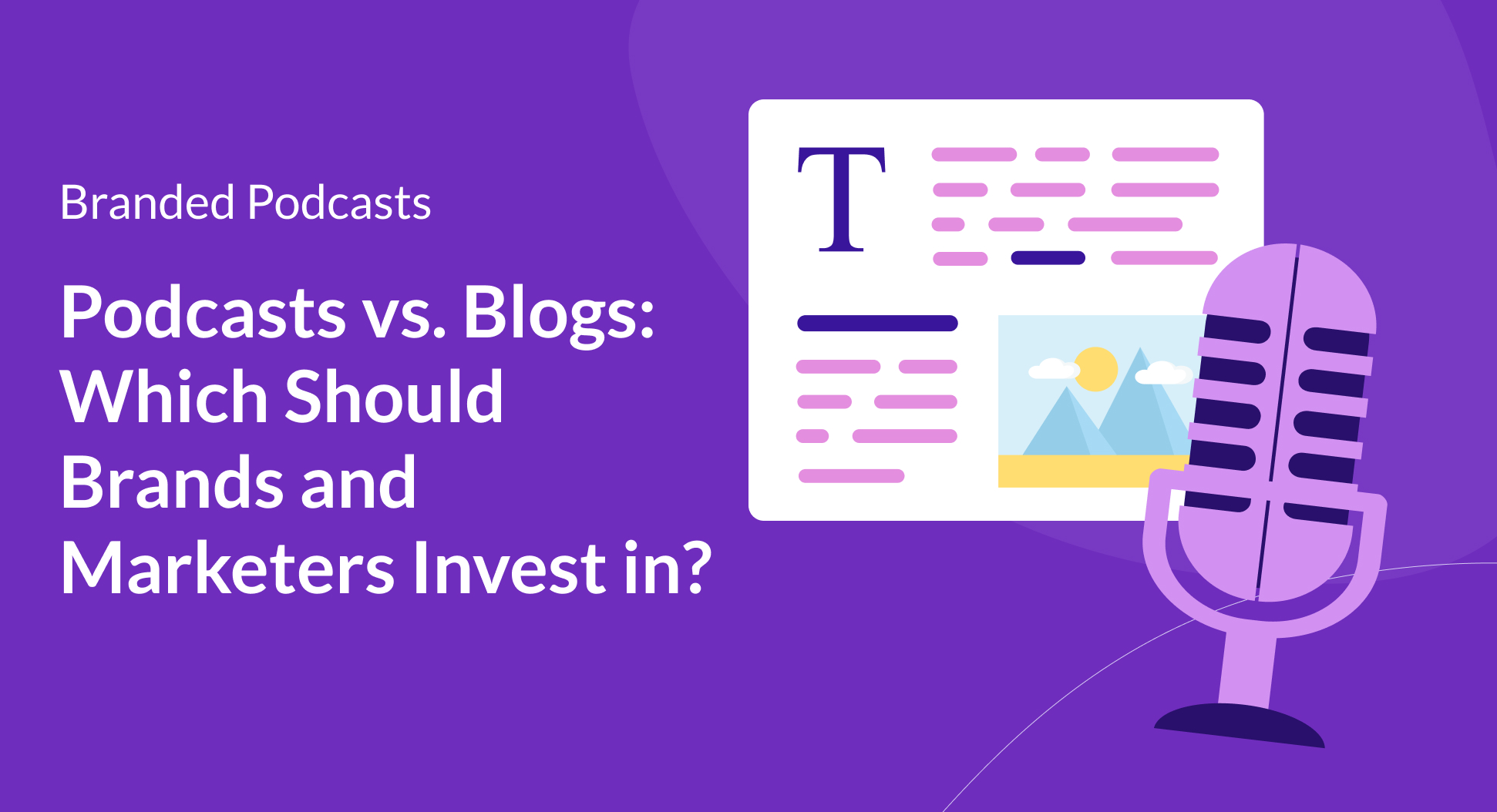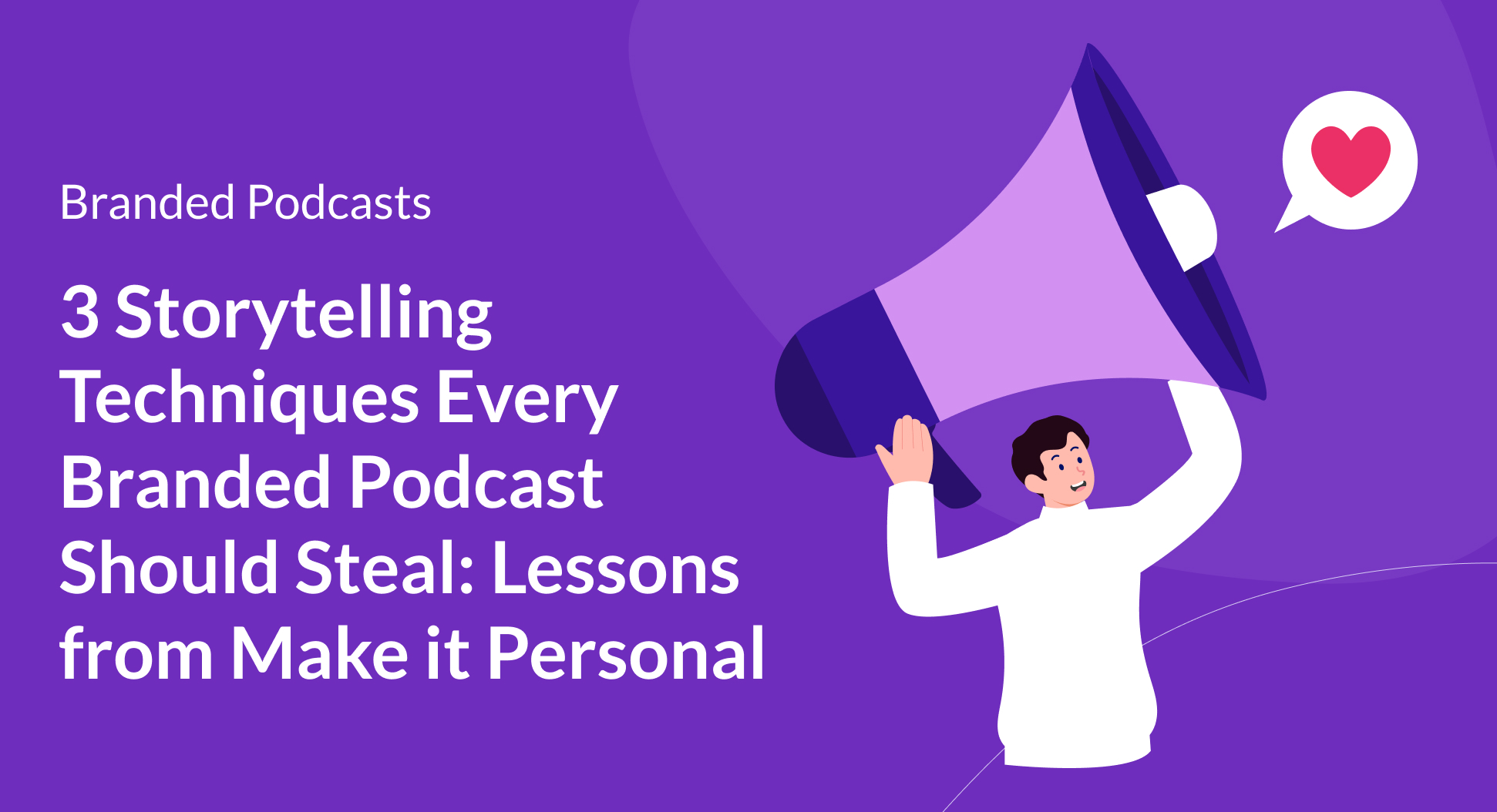Contents
What is An Internal Podcast?
Many companies are using private podcasts to communicate with their internal teams (employees, boards, partners, vendors). An internal podcast functions and sounds much like any podcast you may be used to, but it is delivered in a secure way and not distributed on public podcast distribution channels. It is only accessible to approved “members”, i.e. those internal constituents who need the information.
How to Use Internal Podcasts
Internal podcasts can be highly valuable to your organization for everything from improving internal communications and employee connections to onboarding. Some common ways we see organizations using private podcasts for their employees are:
- Sales enablement
- Training/microlearning
- CEO updates or leadership fireside chats
- Team, product or service updates
- Employee or customer interviews/stories
- Role plays (especially for sales and customer support)
- Leadership development
- Stories from leaders or different departments, to give employees a sense of the larger organization, rationale for decisions, company direction, etc.
- Just-in-time updates for fast-paced industries
- Preparation for a training session, reinforcement/companion piece to an eLearning course or in-person training
- Industry/subject matter knowledge: interviews with experts in the field (internal and external, partners, vendors, etc.), TED-like talks on key areas
- Repurposing existing content/replays of meetings, webinars, etc. (or taking select pieces to reinforce key learnings or distill information for future reference)
Additional Resource: Dig into some specific use cases and success stories from an array of top organizations.
What Do You Need to Create Internal Corporate Podcasts?
1. Equipment for Recording and Editing
This can be as simple as recording from a mobile phone or repurposing a Zoom call as a podcast. Typically, you will want to invest in a microphone, headphones and some basic editing software. If you want to get some ideas, Podbean offers a guide on "How to Record a Podcast" which covers a mic and editing basics, remote recording and more.
2. Hosting Platform
A podcast hosting platform designed for corporate podcasts usually has all the built-in capabilities you'll need to deliver private podcasts securely and conveniently to your employees. We suggest doing a demo or trial of any platform you're considering. Get a feel for the user experience and what tools the platform offers that can save you time. Security is an important consideration for proprietary content.
You also want to be able to deliver a smooth user experience that is similar to employees’ existing podcast listening habits. This is why many companies choose a podcasting platform over simply publishing on their intranet or LMS. Find out if the platform offers SSO integration, an attractive app, collaboration tools, and detailed listening analytics.
3. Content Plan
Decide what your corporate podcasts will be about and how you plan to meet your goals with them. This may mean outlining episodes for one pilot series or creating an editorial calendar for your weekly podcasts for the year. Many times, this will be part of your overall employee development or internal communications plan so you can determine where to strategically use podcasts.
4. Promotion/Communications Plan
Don't neglect to promote and build excitement around the new podcast(s)!
Planning for a Successful Internal Podcast: Considerations
- What is the benefit to the company? What is the benefit to the employee?
- Who needs to be involved in the planning and decision making?
- What format(s) will you use? Corporate podcasts might take the format of interviews, solo talks, stories, role plays, microcasts, a co-hosted discussion, an CEO/leaders’ chats or even something more creative like a documentary format. Tailor the format to what you want to convey.
- What content? This will be based on your goals. Don’t forget there may be opportunities to repurpose content or use podcasts to reinforce/connect to other communication or training modalities.
- Who will be handling what? Look at roles and responsibilities and how to use internal strengths to efficiently produce the best podcast. Consider smart outsourcing for things like production/editing.
- Understand how to track podcast results and measure ROI. What do you want to measure to determine how your podcast is meeting your goals?
Overcoming Challenges
Getting Started
The first hurdle comes with just getting started. It can be overwhelming to decide on the format, figure out how to record and edit, and get settled on details like a platform and distributing the podcasts to employees. Check out this guide for all the basics on starting a podcast and remember you can start simple and grow later.
What if others on your team have doubts about a podcast’s value? Along with getting stakeholders involved early and having clearly identified goals/benefits, we suggest a pilot program. It is one of the best ways to demonstrate the value of a podcast without a huge commitment.
You may have a lot of the knowledge and talent needed to create podcasts already within your organization. For example, if you have an A/V team or employees who produce multimedia content, they typically have the editing skills needed. Additionally, you might consider outsourcing. You can hire a producer to edit or even do full-service planning and production. Some companies hire voice talent to host their corporate podcasts or record an intro.
Even though the content of your internal podcasts may be quite different, we suggest listening to a variety of podcasts to get ideas. You may want to borrow certain elements, such as having a standard intro and outro. Listening will help you get a feel for what works and what doesn’t.
What if employees aren’t listening?
Your private podcasts need an internal marketing plan. How are you getting the word out and creating excitement? How are you promoting podcasts as part of your overall communications strategy? Are employees shown how simple it is to get the content, aware of what’s available, and understand how it will be useful and save them time?
Here are some methods companies have used to be sure their podcasts are promoted and accessible to employees:
- Enable push notifications on your employees’ mobile devices.
- Share private podcasts via internal emails with a link to the podcast episode(s). Take advantage of scannable QR codes that will take employees right to the latest podcast episode.
- Check out your options for embeddable players that you can post to your site in key spots. Depending on your platform, you may be able to make custom playlists to share content that’s applicable to certain situations.
- Integrate your podcast into your employees’ workflow and your overall development plan. Podcasts work well to reinforce other growth opportunities and vice versa.
- Offer incentives based around listening and make it exciting and easy to share. You can use interactive features like app comments, as well as integrating discussions about podcast topics to grow engagement.
- Don’t be afraid to get creative! Build word of mouth by getting employees involved in making podcasts or being interviewed.
Additional Resource: 15 Ways to Promote Your Internal Podcast.
What if Your Podcasts Aren’t Achieving the Results You’d Hoped?
Ask yourself the following questions:
- How does the podcast make work life easier for the employee or provide something unique?
- Are our podcasts being segmented to the proper people in our company?
- How concise and focused is the content delivery?
- Are the podcasts easy to access/does your platform provide a smooth user experience?
- Consider getting feedback from employees. Ask what they need and how they prefer the podcast content to be delivered.
- Look at your listening data to analyze patterns and make adjustments. Perhaps listeners are skipping certain segments or dropping off at a certain time. This can tell you a lot about how to make content more appealing. Remember that you can always create more content around a specific topic, so shorter targeted episodes may lead to deeper podcast engagement.
- Always put yourself “in the ears” of the listener. What content will help them? How can you use storytelling or create a flow to make the content interesting?
If you are working on creating internal podcasts, join other professionals to share knowledge in the Podcasting for Business and Enterprise Linkedin group.
About the author
Shannon Martin is Podbean’s Director of Communications and Corporate Podcast Specialist.


.avif)



.png)

.png)




.png)
.png)
.png)
.png)